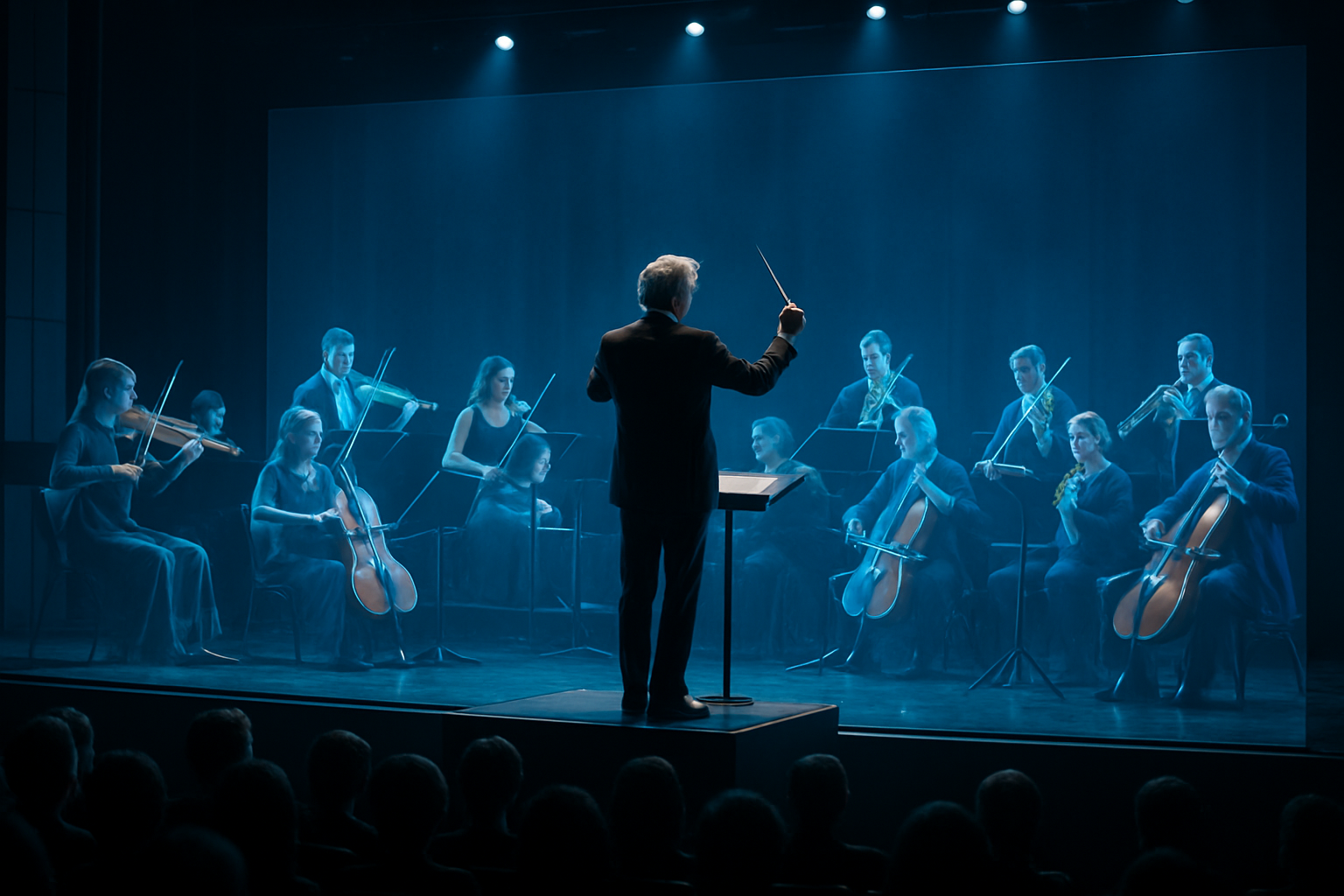Holographic Orchestra: The Future of Symphonic Performance
In the ever-evolving landscape of musical innovation, a groundbreaking trend is redefining the concert experience. Holographic orchestras are emerging as a revolutionary fusion of classical music and cutting-edge technology, captivating audiences worldwide. This avant-garde approach to symphonic performance blends the timeless beauty of orchestral music with state-of-the-art holographic projections, creating an immersive and otherworldly spectacle that pushes the boundaries of artistic expression and technological prowess.

Technological Marvels Behind the Curtain
At the heart of holographic orchestras lies a complex interplay of cutting-edge technologies. High-definition projectors, motion capture systems, and sophisticated audio equipment work in harmony to create a seamless integration of virtual and physical elements. The holographic projections are generated using a combination of 3D modeling, real-time rendering, and advanced lighting techniques. These projections are then mapped onto specially designed transparent screens, creating the illusion of three-dimensional figures sharing the stage with live performers.
Reimagining the Concert Experience
Holographic orchestras offer a unique and immersive experience that transcends traditional concert boundaries. Audiences are treated to visually stunning performances where holographic conductors from different eras can lead modern orchestras, or where legendary soloists can be virtually resurrected to perform alongside contemporary musicians. This blend of past and present creates a magical atmosphere, allowing concertgoers to witness historical musical collaborations that were previously impossible.
Creative Possibilities and Artistic Expression
The advent of holographic orchestras has opened up a world of creative possibilities for composers and performers alike. Contemporary composers can now craft pieces specifically designed to incorporate holographic elements, pushing the boundaries of musical storytelling. Performers, too, find themselves exploring new realms of expression as they interact with virtual counterparts, challenging traditional notions of stage presence and musical interpretation.
Educational Impact and Accessibility
Beyond their entertainment value, holographic orchestras serve as powerful educational tools. They offer students and music enthusiasts unprecedented access to masterclasses led by virtual representations of renowned musicians. This technology also allows for the recreation of historical performances, providing invaluable insights into different conducting and performance styles across various eras. Additionally, holographic orchestras have the potential to bring world-class performances to remote areas, democratizing access to high-quality classical music experiences.
Challenges and Controversies
Despite their innovative appeal, holographic orchestras are not without controversy. Critics argue that the technology may detract from the authenticity of live performance and potentially undermine the livelihoods of working musicians. There are also ongoing debates about the ethical implications of digitally resurrecting deceased artists for performances. Technical challenges, such as maintaining perfect synchronization between live and holographic elements, continue to pose hurdles for organizers and technicians.
The Future Landscape of Symphonic Performance
As technology continues to advance, the potential for holographic orchestras seems boundless. Industry experts predict the integration of artificial intelligence to create even more responsive and interactive holographic performers. Virtual reality and augmented reality technologies are also being explored to further enhance the immersive nature of these performances. While traditional orchestras will likely always have their place, holographic orchestras represent an exciting new frontier in the world of classical music, bridging the gap between tradition and innovation.
Global Reception and Cultural Impact
The reception of holographic orchestras has varied across different cultures and regions. In tech-savvy markets like Japan and South Korea, these performances have been embraced enthusiastically, often selling out venues. European audiences, while initially skeptical, have shown growing acceptance, particularly among younger demographics. In contrast, some traditional classical music strongholds have been slower to adopt this technology, citing concerns about preserving the purity of the art form. However, as successful performances continue to garner attention worldwide, even the most conservative musical institutions are beginning to explore the possibilities offered by holographic technology.
Economic Implications for the Music Industry
The rise of holographic orchestras has significant economic implications for the music industry. While the initial setup costs for such performances are substantial, they offer the potential for increased revenue through unique concert experiences and expanded audience reach. The technology also opens up new avenues for monetizing the legacies of deceased artists, raising complex questions about intellectual property rights and estate management. Furthermore, it creates new job opportunities in areas where technology and music intersect, potentially reshaping the skill sets required in the classical music industry.
In conclusion, holographic orchestras represent a fascinating convergence of art and technology, offering a glimpse into the future of symphonic performance. As this innovative approach continues to evolve and mature, it has the potential to revolutionize how we experience, create, and preserve classical music. While challenges and controversies remain, the allure of witnessing the impossible – be it a duet between a living violinist and a holographic Paganini or a Beethoven-conducted symphony – promises to keep audiences enthralled and push the boundaries of musical expression for years to come.





